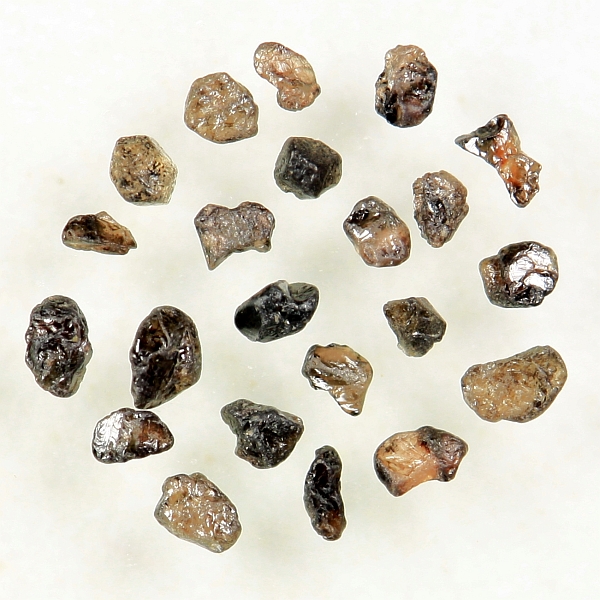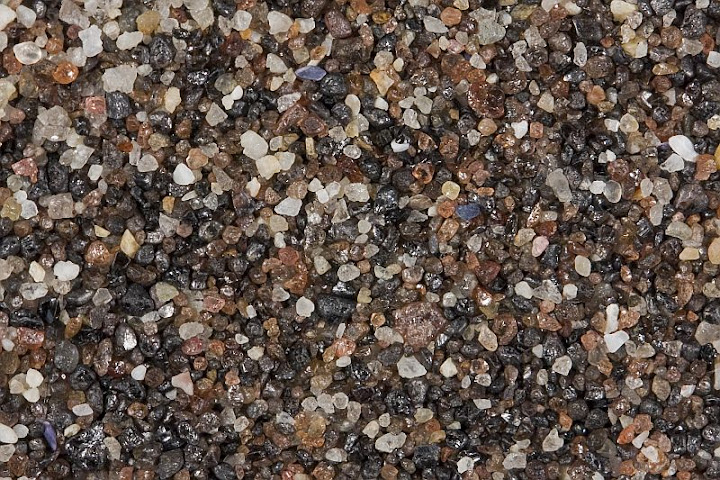Cassiterite is a mineral composed of tin and oxygen (SnO2). It is the most important ore of tin. Pure cassiterite is light-colored mineral, but in real world it contains some iron, which makes the crystals often look almost opaque. The grains in sand are usually light to dark brown. Crystals are commonly twinned and it is a very helpful characteristic in mineral identification. Its twins are called elbow twins because two crystals are joined like the upper arm and forearm. Beautifully preserved specimens do not last in sand. Hence, we have not much hope finding perfect examples of twinned crystals. Take a look at the scheme below to find out how to spot elbow twins when studying sand grains.

This is how easily identifiable cassiterite sand grain may look like. Two crystals are joined like upper and forearm forming a characteristic notch (visor tin) between them (pointed by an arrow). There is no difference between the “upper arm” and “forearm”.
Cassiterite has strong luster which is usually described as adamantine or submetallic. Such luster is common to minerals with high refractive index. It is unusually heavy (density is ~7 grams per cubic centimeter) for an apparently nonmetallic mineral. There are several minerals that may look similar. Rutile (titanium oxide) for example may look alike, but it usually has deeper reddish color. Even garnet may sometimes look very similar to it.

Cassiterite grains handpicked from a beach sand sample of La Turballe, France (The Bay of Biscay). How many elbow twins can you find? Width of view 7 mm.

Sand sample from La Turballe. Width of view 20 mm.
It is usually an igneous mineral crystallizing out of a felsic magma. Most tin ores are associated with granitic rocks which host cassiterite as an accessory mineral. It is a frequent component of hydrothermal veins and greisens also.
It is not abundant in rocks because tin is not among the commonest elements of the crust. But cassiterite is resistant to weathering and therefore pretty common (although rarely abundant) mineral in sand (stream tin).
Cornwall in England was once famous mining area, but there is no tin mining taking place anymore. Most important cassiterite sources are Malaysia, DR Congo, Indonesia, Bolivia, and Nigeria.
Leave a Reply